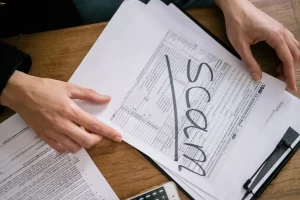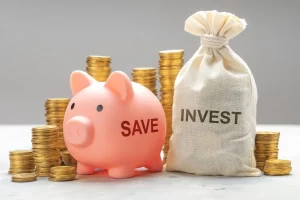- Debts and Credit
How to Get Out of Debt and Get Back to Having a Healthy Financial Life

Debt can feel overwhelming, but getting out of debt is possible with the right plan. Whether you have credit card debt, personal loans, or overdue bills, taking control of your finances can help you regain financial stability and reduce stress.
In this guide, we’ll cover step-by-step strategies to eliminate debt and rebuild a healthy financial life.
1. Understand Your Current Debt Situation
Before creating a plan, you need to know exactly how much you owe.
✅ How to Assess Your Debt:
✔ Make a list of all debts, including credit cards, loans, and bills.
✔ Write down the total amount owed, minimum payments, and interest rates.
✔ Identify which debts have high interest rates and which are most urgent.
🚀 Example: If you have $10,000 in debt, but $7,000 is from a credit card with 20% interest, you should prioritize paying that first.
💡 Tip: Use a spreadsheet or budgeting app to track your debt in one place.
2. Create a Realistic Budget to Free Up Money
If you want to pay off debt faster, you need to adjust your budget to free up more money for payments.
✅ How to Budget for Debt Repayment:
✔ Cut non-essential expenses (subscriptions, dining out, impulse purchases).
✔ Increase income with side gigs or extra work.
✔ Use the 50/30/20 rule (50% needs, 30% wants, 20% savings/debt repayment).
🚀 Example: If you free up $200 per month, that’s an extra $2,400 per year toward debt payments.
💡 Tip: Even small cuts in daily spending (like making coffee at home) add up over time.
3. Choose the Best Debt Repayment Strategy
There are two popular strategies to pay off debt efficiently:
✅ Debt Snowball Method (Motivation-Focused)
✔ Pay off smallest debts first, then move to larger ones.
✔ Builds momentum and keeps you motivated.
✅ Debt Avalanche Method (Interest-Focused)
✔ Pay off highest-interest debt first to save money.
✔ Reduces total interest paid over time.
🚀 Example: If you have three debts:
✔ $500 at 18% interest
✔ $3,000 at 12% interest
✔ $7,000 at 6% interest
The snowball method suggests paying off the $500 debt first, while the avalanche method prioritizes the $3,000 debt.
💡 Tip: If you need quick motivation, use the snowball method. If you want to save the most money, use the avalanche method.
4. Negotiate with Creditors for Better Terms
Many creditors are willing to negotiate if you show a commitment to paying.
✅ Debt Negotiation Strategies:
✔ Call your creditor and ask for a lower interest rate or reduced settlement.
✔ Request a longer repayment term to reduce monthly payments.
✔ Consider debt consolidation to combine multiple debts into one lower-payment loan.
🚀 Example: If your credit card company reduces your interest rate from 20% to 10%, you can save hundreds of dollars in interest.
💡 Tip: Always get agreements in writing to avoid future issues.
5. Stop Accumulating More Debt
To truly escape debt, you must avoid taking on new debt while paying off old balances.
✅ How to Prevent More Debt:
✔ Avoid using credit cards for unnecessary purchases.
✔ Build an emergency fund to cover unexpected expenses.
✔ Stick to a cash-based or debit card budget for everyday spending.
🚀 Example: If you stop using credit cards and build a $1,000 emergency fund, you won’t need loans for small unexpected expenses.
💡 Tip: If you struggle with impulse spending, leave your credit card at home when shopping.
6. Consider Debt Consolidation or Refinancing
If you have multiple debts with high interest, consolidation can simplify payments and reduce costs.
✅ Debt Consolidation Options:
✔ Personal loan – Combines debts into one lower-interest loan.
✔ Balance transfer credit card – Moves high-interest credit card debt to a 0% interest promotional offer.
✔ Debt management plan – Works with a financial advisor to create a structured repayment plan.
🚀 Example: If you have three credit cards with 22% interest, consolidating them into a 10% personal loan can save you hundreds per year.
💡 Tip: Only consolidate if you get a lower interest rate—otherwise, it’s not worth it.
7. Track Progress and Stay Motivated
Getting out of debt takes time and discipline, so tracking your progress keeps you motivated.
✅ How to Stay on Track:
✔ Set small milestones (e.g., paying off the first $1,000).
✔ Use visual tracking like a debt payoff chart.
✔ Reward yourself when you hit goals (without spending too much).
🚀 Example: If you started with $10,000 debt and now owe $7,000, celebrate your progress—it keeps you committed!
💡 Tip: Join online debt-free communities for support and motivation.
8. Build Healthy Financial Habits for the Future
Once you’re debt-free, focus on staying financially healthy.
✅ Long-Term Financial Habits:
✔ Keep an emergency fund to avoid new debt.
✔ Use credit cards responsibly (pay in full each month).
✔ Invest for the future to grow wealth over time.
🚀 Example: If you save $100 per month after paying off debt, you’ll have $12,000 in 10 years.
💡 Tip: Being debt-free is great, but building wealth is the next step—consider investing!
Final Thoughts
Becoming debt-free is possible with the right mindset and strategy.
✔ Assess your debt and create a repayment plan.
✔ Use budgeting and debt repayment strategies like snowball or avalanche.
✔ Negotiate lower interest rates and consolidate if necessary.
✔ Avoid new debt and build an emergency fund.
✔ Track your progress and adopt smart financial habits.
🚀 The sooner you take action, the faster you’ll achieve financial freedom—start today!






